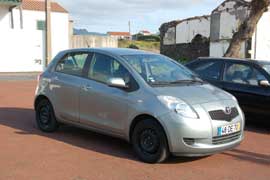
We enjoyed Pico so much last September that we decided to come back. Serge and his team had said that end April / beginning of May would be a good time for the whales so we came out for the first week in May. Again, we booked with Archipelago Azores who, once again, did us proud. Our car for the week (which struggled with the hills!) was a Toyota Yaris who we called Deutscher because his letters were DE.
Warning - if you don't like whale and dolphin pictures then stop looking after the sunset as most of the photos following that are of marine life. We went to whale watch and that is what we did most of the time! There is the odd photo here and there of something other than something you find in or near the sea but you have to look carefully to find them!
We stayed at Pocinho Bay - a beautiful place on the west side of the island. It wasn't far from the capital, Madalena, and was brilliant for sunset watching. Our hosts were lovely, our stone cottage very comfy (as was the guest lounge, especially the hammocks), breakfast was great and the 14 acres of grounds beautiful to walk around so a great success.



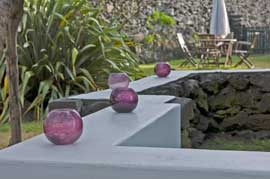
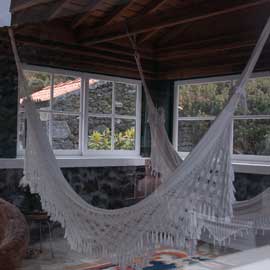

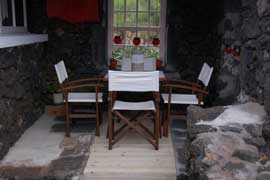


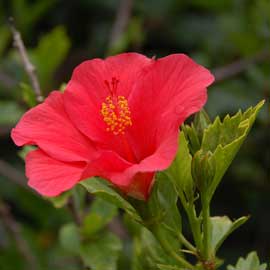
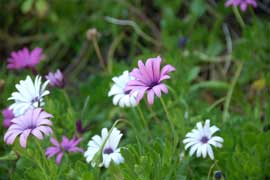
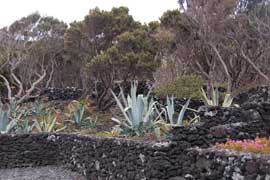
Jose and Luisa had renovated the site really sympathetically, keeping the character of the vineyards whilst creating a space of peace and tranquility - lovely!
The view across the road was lovely. the island opposite is Faial - one day perhaps we'll visit there too.

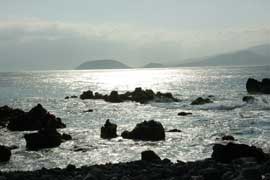


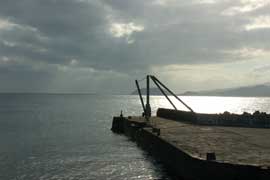
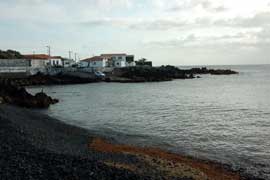

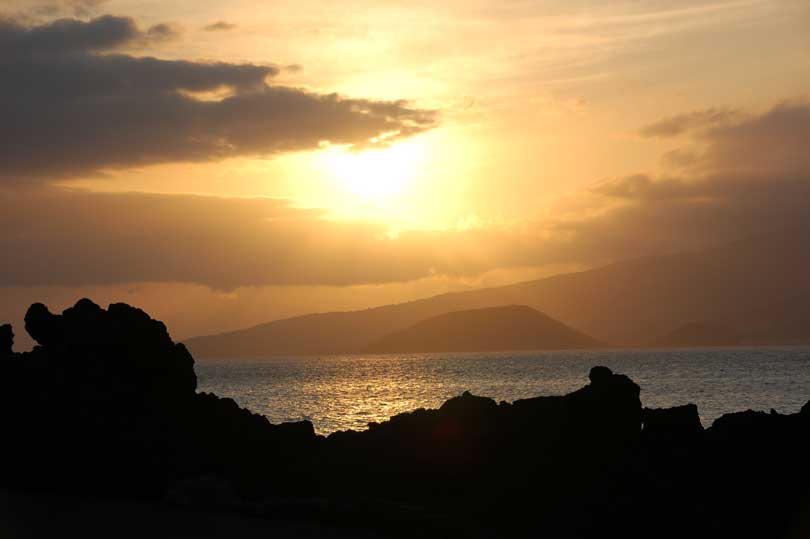
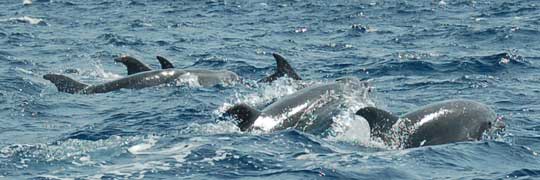
Bottlenose dolphin
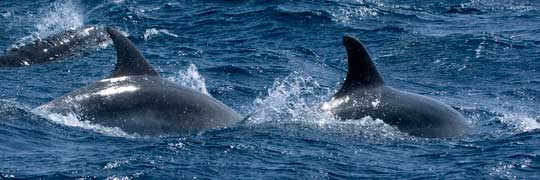
Bottlenose dolphin
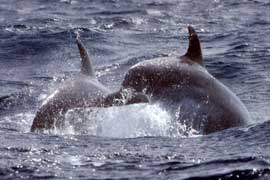
Bottlenose dolphin

Bottlenose dolphin
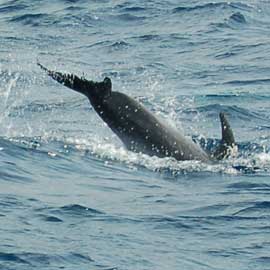
Bottlenose dolphin

Bottlenose dolphin
It's unusual to see bottlenose dolphins in such a large group - maybe they stayed together so they didn't get lost in the strong waves or maybe they were just feeling sociable. Joana told us that they'd been like this for a few days.
The dolphins were lovely but the Sperm Whales were the treat of the morning. We reckon we saw just about double figures in different groups / pairs / singles during the morning so a really special trip.

Sperm Whales

Sperm Whales
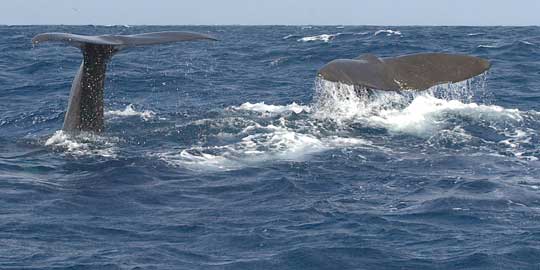
Sperm Whales
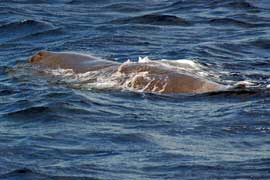
Sperm Whales
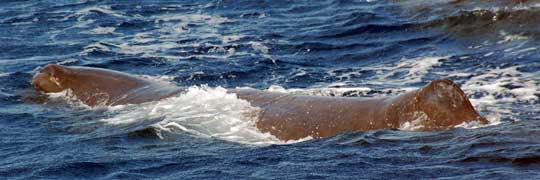
Sperm Whales
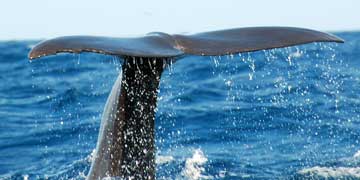
Sperm Whale
There were a few pairs. Generally the sperm whales that are seen around the Azores are females as the males disappear as soon they they become "teenagers" whereas the females in the family stay together their whole lives.
All the time we were there another photographer, Alexander Goebels, was there as well. He had a permit to dive with the whales and take photos of them under water. Check out his website.

Sperm Whales
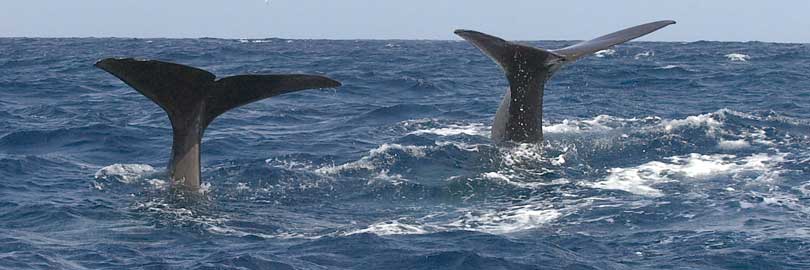
Sperm Whales
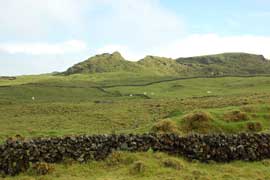
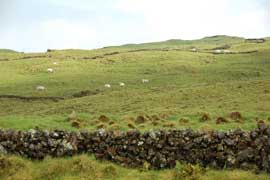
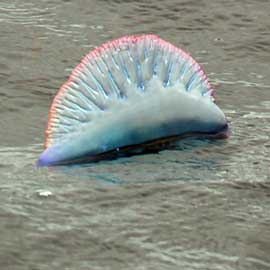
Another interesting creature we saw on our journey today was a Portuguese Man o' War (aka Medusa). These jelly fish are incredibly pretty but also very poisonous. Thet have really long tentacles below the surface (up to 10 metres) that they wrap around their prey (including humans if you get in the way). They then poison the prey and off you go to hospital! Hard to believe something so pretty can be so dangerous!
We also saw an odd dolphin here and there but they got lost in the waves so no photos today.
And now ... to the whales ... all of them are Sperm Whales so I won't label them unless there's something specific to say about the photo.

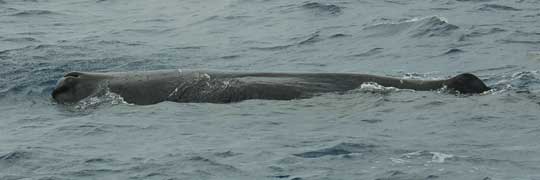
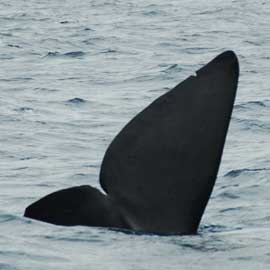
Tail waving

Spy hopping


Mr. Sperm Whale
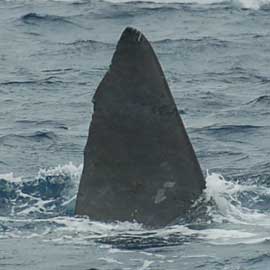
Tail Waving

Family Group with Baby in the middle.

This is the baby who came to say "Hello" - the white bit in the bottom of the photo is our boat! As our boat was a 12 seater Zodiac Baby Sperm Whale seemed ever so close!
The little circle on his body was probably made by a giant squid tentacle!
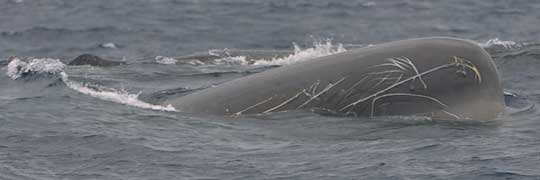
Mr. Sperm Whale - the scratches will have been caused in various battles, possibly by a giant squid as that's what sperm whales like to eat!
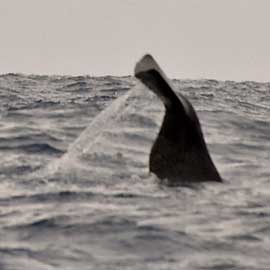
Lob tailing
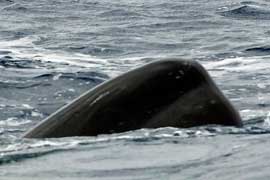

Tail waving
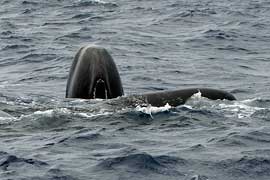
Spy hopping
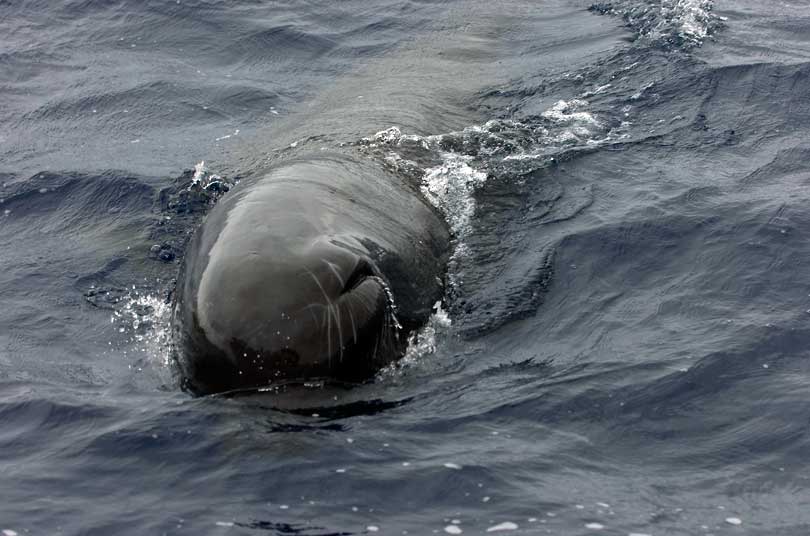
Baby on his / her way to have a closer look at us.
Wednesday dawned and the sea was calm! A different day and a different experience altogether. It was still a very grey, overcast, cloudy and chilly day but we went out in both the morning and the afternoon and saw Common Dolphin, Risso's Dolphin, Sei Whale and ... Blue Whale (Hurrah!)
The land from the boat showed the strip of white houses near the coast with all the fields behind up the hills.

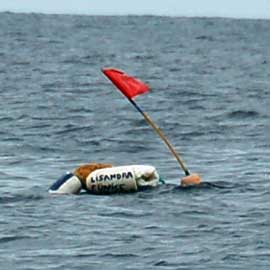

Common Dolphin
Starting with the dolphins. We came across a couple of Common Dolphin pods - one on each trip. Neither were particularly playful or friendly but there were some divers about so it could be that they were a bit nervous.
Not sure what happened to my photos today but a lot of them look a bit grey (other than the Blue Whales and those photos are blue!). The sea was fairly grey (reflecting the sky) but I don't remember it being quite this colour. Jonathon's photos are also fairly grey - but a slightly different shade of grey. Ho Hum ...
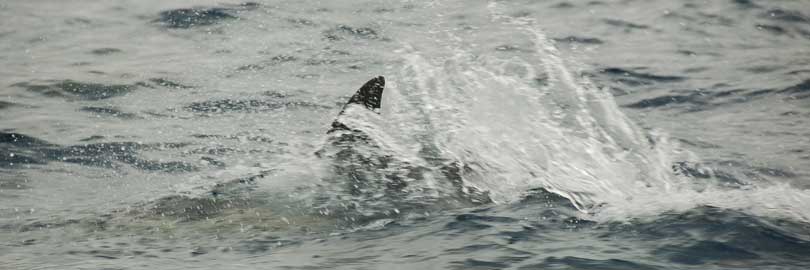
Common Dolphin

Risso's Dolphin

Risso's Dolphin

Risso's Dolphin

Risso's Dolphin
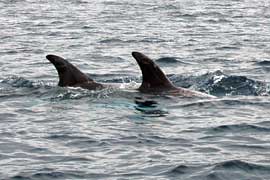
Risso's Dolphin
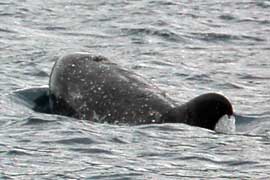
Risso's Dolphin
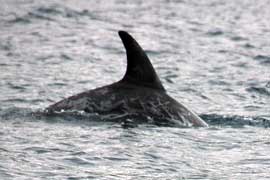
Risso's Dolphin

Risso's Dolphin

Risso's Dolphin
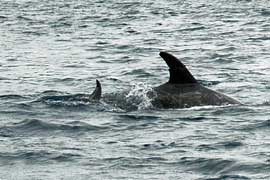
Risso's Dolphin (with baby)

Risso's dolphin
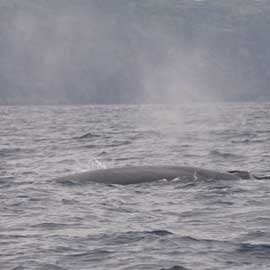
Sei Whale
Moving on to the whales ... both Sei Whales and Blue Whales are baleen whales which means they don't have teeth. They live on krill - tiny little organisms that live in the sea. They suck in a whole load of sea water then filter it out through their baleen plates, keeping the krill in to eat and getting rid of the water.
Another difference between the baleen whales and the whales with teeth is that the baleen whales have two blow holes whereas the toothed whales only have one of the side of their head.
The baleen whales pass the Azores on their migration route. At this time of year they travel from South (breeding ground) to the North (feeding ground). The Sei Whales are known as the Ferraris of the whale population as they can travel up to 25 knots (50 km/h). The pair we saw today were strolling along at about 5 knots so pretty slow for them. They were probably just munching or having a rest for a whilebefore making their way North again.

Sei Whale
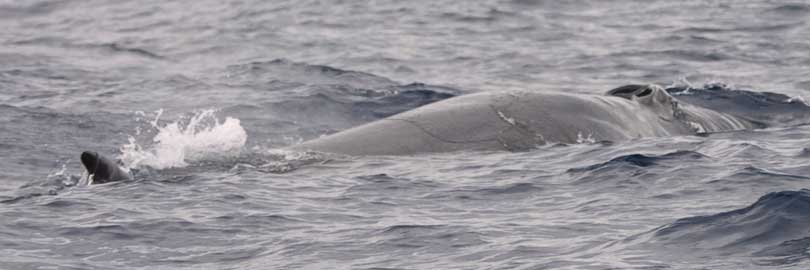
Sei Whale
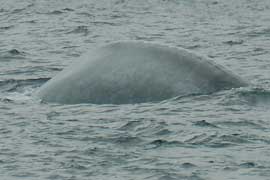
Blue Whale
We have never seen a Blue Whale in the wild before and there were two of them. the larger one was c.20 metres long. The small dorsal fin looks tiny compared to the huge body.
The Blue Whale is the largest creature on Planet Earth and it was what we were really hoping to see on this trip so it was a real privilege to see them.
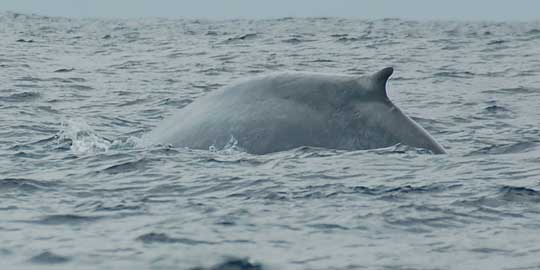
Blue Whale.
Whereas you can tell which Sperm Whale is which by the nicks etc in their tail, the Blue Whales are identified by the dots close to their dorsal fin as each of them has a unique pattern.

Blue Whale
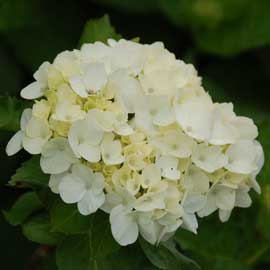
As we had loads of time to get to Lajes, we had a very leisurely breakfast, chatting to our neighbour who was something to do with Unesco and so had lots of interesting stories. We then drove through the middle of the island, admiring the pretty roadside flora.
The hydrangeas were just starting to come into flower and there were plenty of other flowers to admire as well.
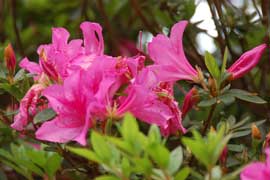
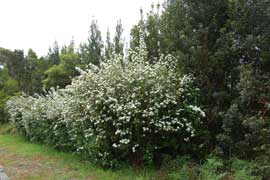

As we drove along, Jonathon suddenly let out a shocked cry - the car behind us had just blown up and smoke was billowing out of its engine. The people got out OK and we carried on.
A little bit further along and we came across about 25 black and white cows and a very large (but slow) bull who seemed to be taking themselves for a walk. We had no idea who they belonged to or where they should be but they seemed to be in no imminent danger so we left them strolling along.
One thing that struck us this time was the number of calves in the fields with their mums - it was lovely to see them all as we drove around. There seemed to be a lot more goats this time too (and even the odd sheep).
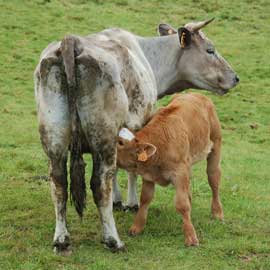


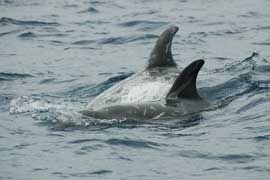
Risso's Dolphin

Risso's Dolphin

Risso's Dolphin
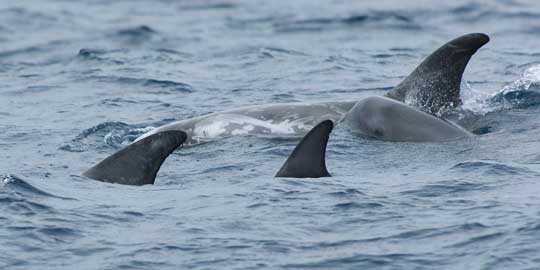
Risso's Dolphin
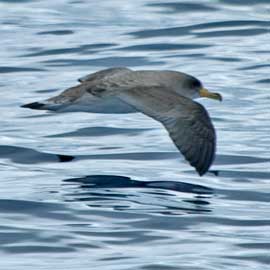
Cory's Shearwater
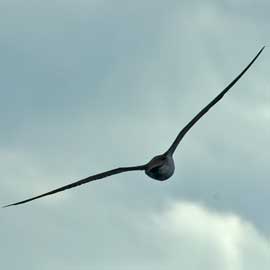
Cory's Shearwater
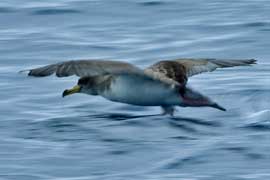
Cory's Shearwater
They use the sea as their runway and scamper along until they have enough speed to launch into flight.
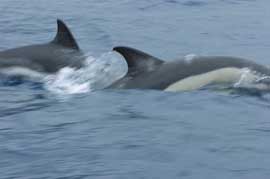
Common Dolphin
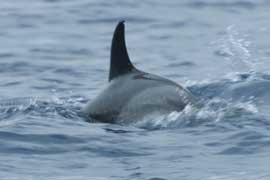
Common Dolphin
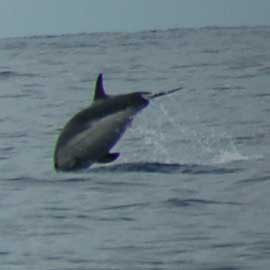
Striped Dolphin
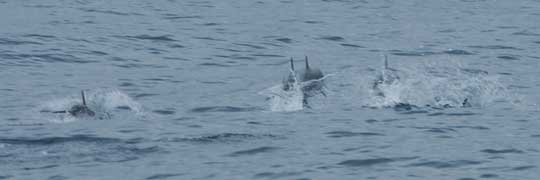
Striped Dolphin

Striped Dolphin
Dinner at Serge and Marte's and we were delighted to be able to say "Hi" to Jeremy and Anne-Lise (who we stayed with last time) as they were also there. After dinner it was back to base to pack and we got ready to go back to the UK (but not before one more whale watching trip).
Friday morning dawned and the sun was shining, the sea crystal clear and like a mill pond - what a change! The termperature actually got above 20C (just). Didn't entice the whales to come and say hello though - Dolphin Watching today instead.
However, we did see all four species of dolphin that are found around the Azores at this time of year and some of them came pretty close to the boat and did some showing off so a pretty good trip.
Jonathon got a lovely photo of a Portuguese Man o' War (Medusa) and you can see its tentacles under the water.

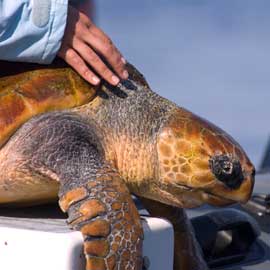
We hadn't even really got out of the harbour before the other boat (we weren't with Joana on this trip) had found a turtle. The team take them out of the water, give them a health check and measure them. tag them then release them. This is part of a scientific programme and they've discovered that the Azores turtles travel from Florida then eventually go back, presumably to retire.
We also saw a turtle in the water but Pedro wasn't as fast as Joana so we didn't get that one on to the boat!
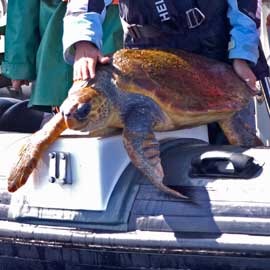

Seagull
Before we get to the dolphins, here are a few seabirds that we saw during the week. First, the common old Seagull. The one on the left was standing on a big piece of rubber tubing - no idea where it came from or what it was doing there but it made a good perch.
The photos immediately below here are Cory's Shearwaters and the other two are Atlantic Tern

Seagull
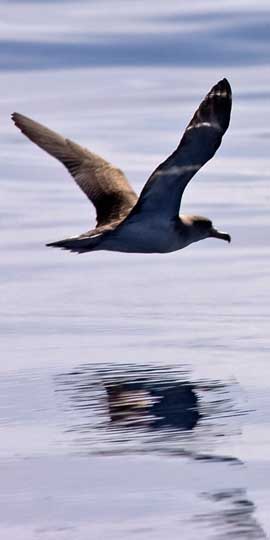
Cory's Shearwater
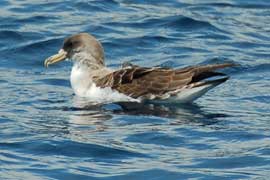
Cory's Shearwater

Cory's Shearwater

Tern
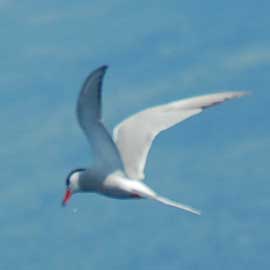
Tern

Mackerel
One of the reasons there were plenty of dolphin around was probably because there were a lot of mackerel - a favourite food of the Common, Striped and Bottlenose Dolphin. The Risso's Dolphin eat squid instead.
So ... a few dolphin photos ....

Bottlenose Dolphin

Common Dolphin
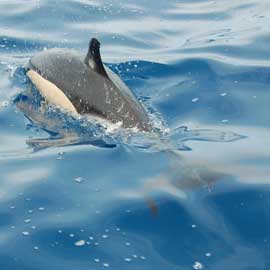
Common Dolphin
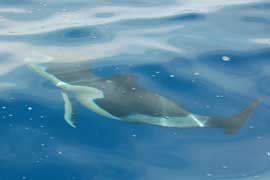
Common Dolphin

Common Dolphin
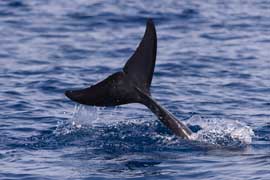
Risso's Dolphin
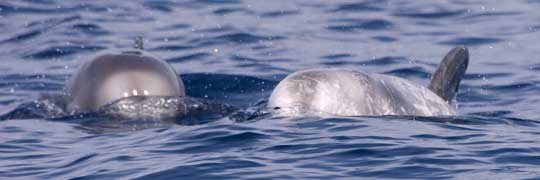
Risso's Dolphin

Risso's Dolphin

Risso's Dolphin

Risso's Dolphin

Risso's Dolphin
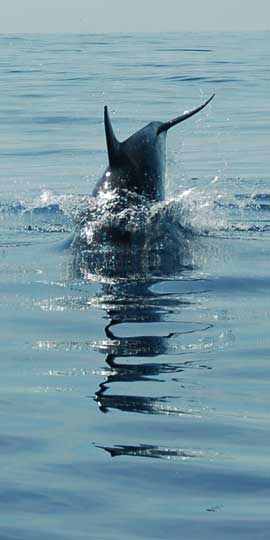
Striped Dolphin
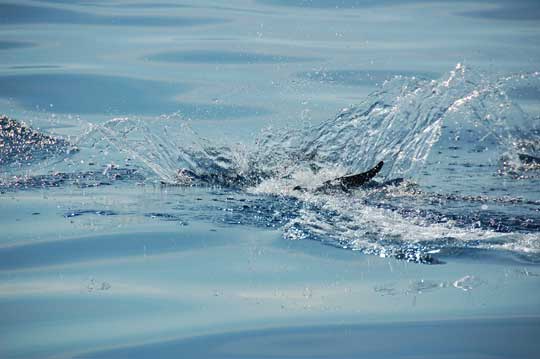
Striped Dolphin - yes there is one amongst all the splashing!
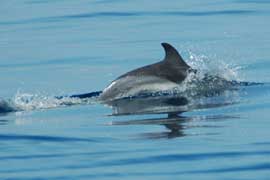
Striped Dolphin

Striped Dolphin
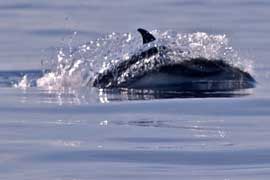
Striped Dolphin

Striped Dolphin

Striped Dolphin
A final goodbye to Pico - the volcano from which the island takes its name and off we went.
The journey home was an overnight stay in Ponta Delgarda (Sao Miguel) and then a direct flight (SATA) to the UK but via Manchester before arriving at Gatwick which was a bit of a nuisance but still better than a ferry to Faial, flight to Lisbon and then flight to London so we can live with it.
One last request - if I've labelled any of the animals incorrectly, please could someone let me know!
